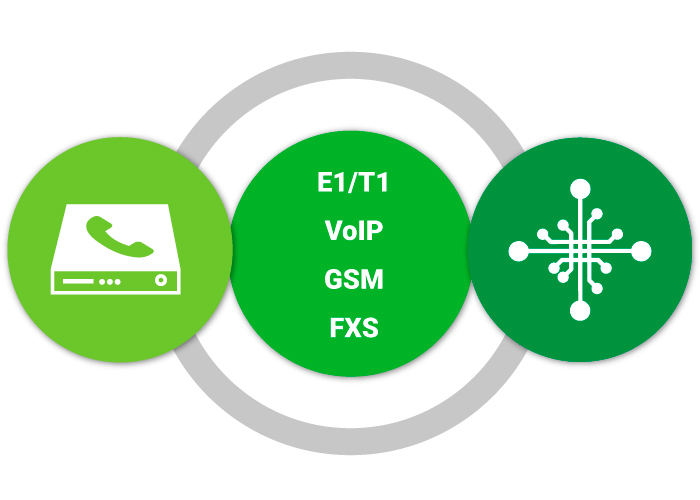As mentioned in this article, the use of media gateways for call routing offers significant savings benefits to all types of companies. Now, in order to discuss this strategy in a more practical way, Khomp is presenting the three initial steps needed to implement it.
It is worth noting that every company has its own singularities and, therefore, it is critical to have the support of a system integrator in order to obtain the best performance results from this process.
Step 1: Choose a media gateway
The first step in this process is to define which media gateway is right for your business. To do this, you need to find out how many simultaneous calls are handled by your company on a given periodicity, which telephony interfaces are more active than others, and what are the characteristics of usage that influence the cost of the calls, such as location, way of contact, etc.
While small and medium businesses tend to select small gateways and ATAs, call centers, carriers, and large corporations need more robust hardware, with a high number of simultaneous calls, high availability, and reliability.
Step 2: Set up telephony groups
With the device in hand, it’s time to program the telephony interfaces. “For the E1/T1 link, for example, you have to set up the signaling options related to the technology: what signaling option you will use, R2 or ISDN, the clock, and how the telephony channels will be used,” explains Jonas Luis Teixeira, Communication Analyst of Khomp’s Product Documentation Division.
In addition to the E1/T1 links, this step also involves the programming of the VoIP, GSM, and FXS channels.
Step 3: Define the routes
With the telephony interfaces defined, it is time to actually indicate which routes will be used according to each call’s profile and what will the triggers be for each case. “Imagine a company that decides to route all calls to fixed numbers through the E1/T1 link and all calls to cell phone numbers through the GSM interface. In this case, they simply need to set up the tool so that every call starting with an area code (long distance call) followed by the number 9 (XXX9) will activate the SIM cards in the device,” he explains.
As mentioned before, these are the basic steps for implementing a call routing mechanism. If you need more detailed information on this process, please contact our Business Consultants or talk to your system integrator. You can also follow Khomp’s blog, which presents articles with a more technical approach on this subject.
